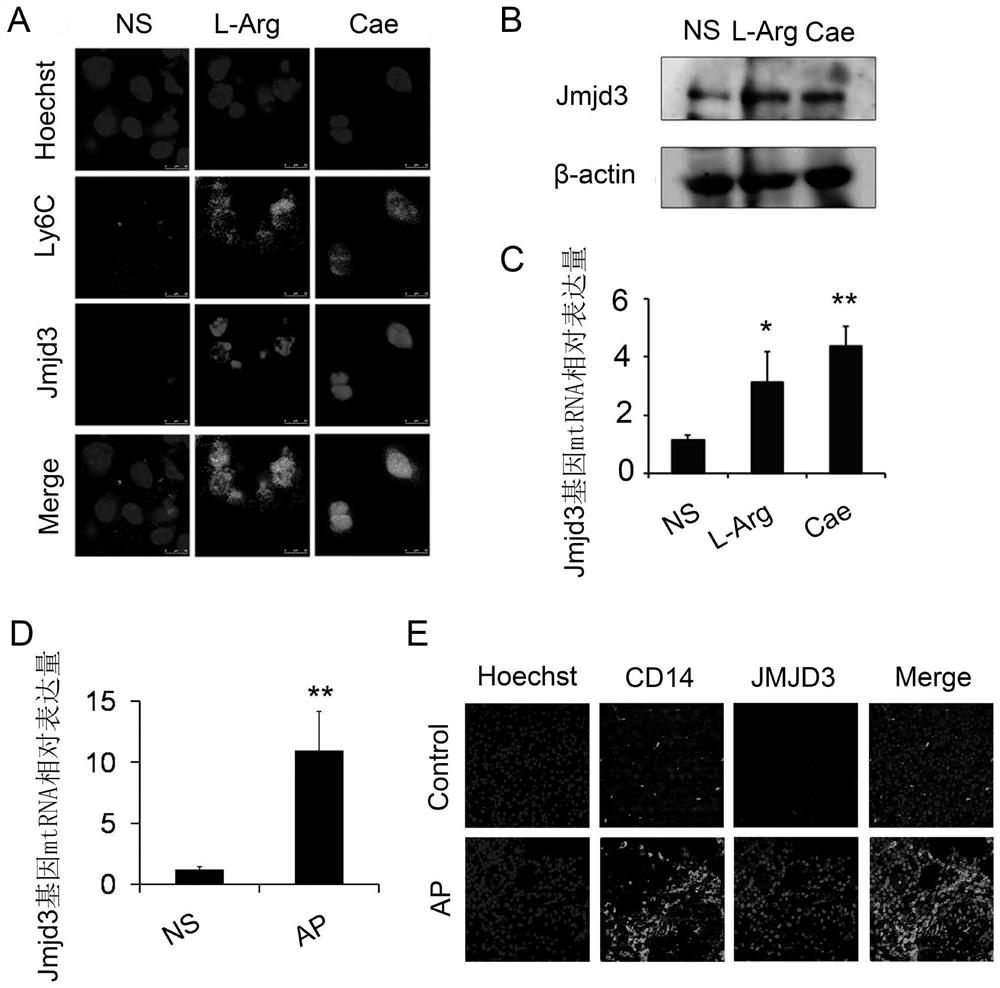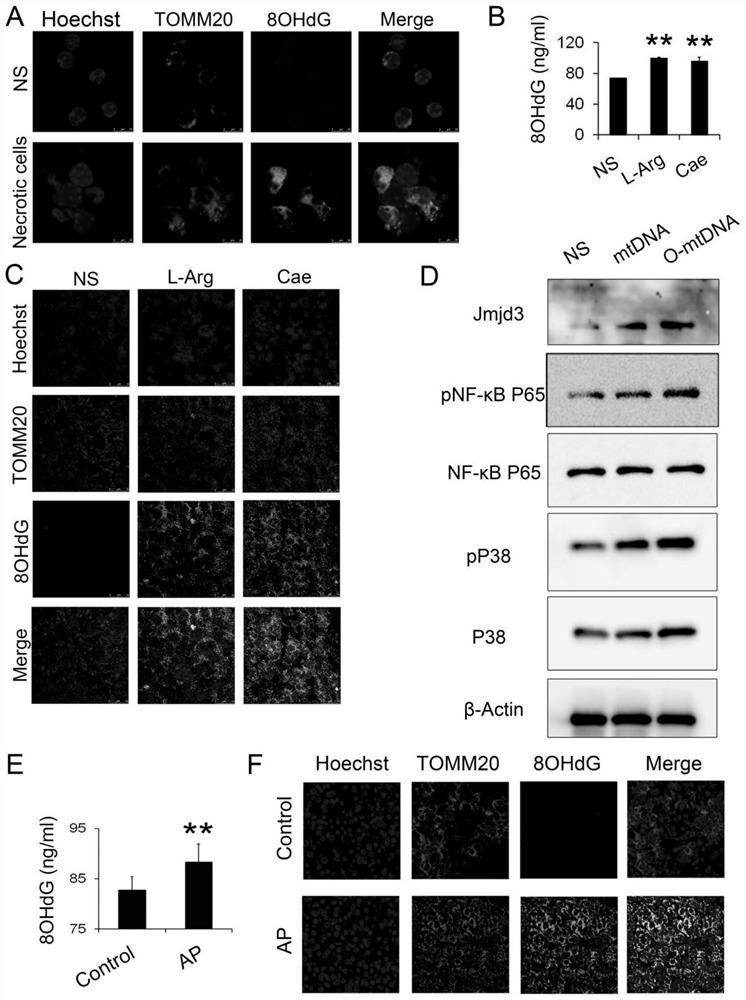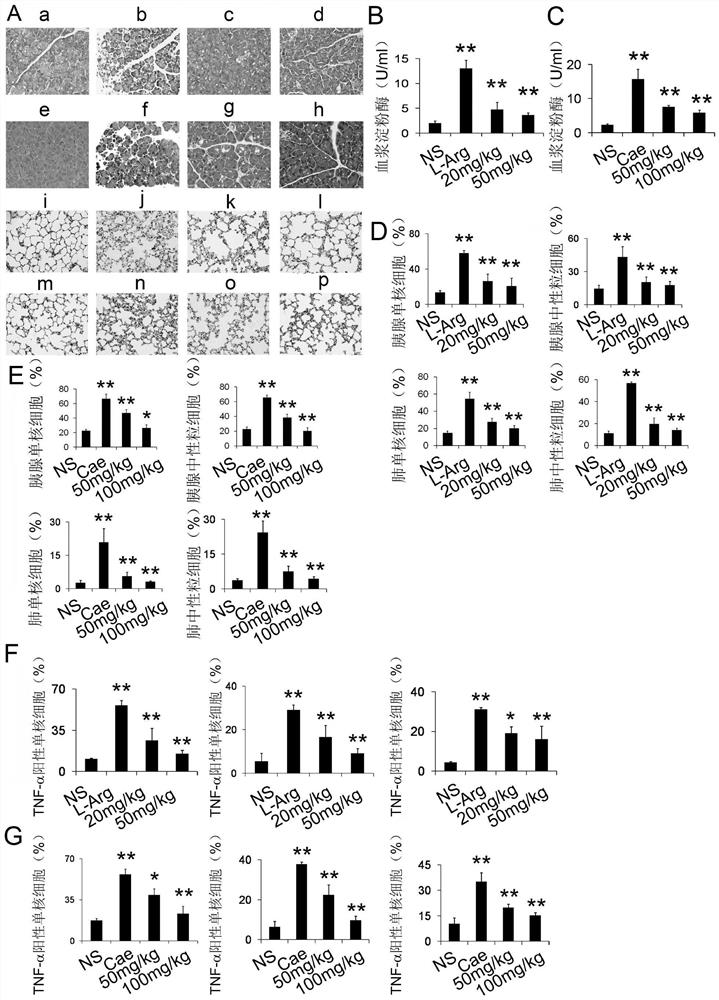Use of jmjd3 inhibitors in the preparation of medicines for preventing and treating pancreatitis
A 1. JMJD3, inhibitor technology, applied in the field of medicine, can solve the problem of no JMJD3 pancreatitis target and other problems, and achieve the effect of improving acinar cell necrosis
- Summary
- Abstract
- Description
- Claims
- Application Information
AI Technical Summary
Problems solved by technology
Method used
Image
Examples
preparation example Construction
[0098] (17) Preparation of oxidized mtDNA BIO-LINKBLX ultraviolet crosslinking instrument was used to put appropriate amount of sterile mtDNA into the ice box, then placed in the ultraviolet crosslinking instrument for 30 min and then taken out, and placed in a -20°C refrigerator for use.
[0099] 9. Mouse plasma amylase detection
[0100] 96 hours after acute pancreatitis induced by L-arginine or cerulein, blood was collected from the orbits of mice in each group, centrifuged at 3000rpm for 10 minutes at 4°C, and the upper layer plasma samples were taken, diluted 10 times with MilliQ water and sent to Chengdu, Sichuan Province, National New Drug Safety The evaluation center detects plasma amylase concentration.
[0101] 10. Detection of plasma 8OHdG concentration
[0102] 96 hours after acute pancreatitis was induced by L-arginine or cerulein, blood was collected from the orbits of mice in each group, centrifuged at 3000 rpm for 10 minutes at 4°C, and the collected human cli...
Embodiment 1
[0103] Example 1 Expression of JMJD3 in pancreas mononuclear cells of mice with acute pancreatitis and patients with pancreatitis
[0104] 20-25g male C57BL / 6 mice were injected intraperitoneally with L-arginine and cerulein to induce acute pancreatitis. The specific method is as follows: the acute pancreatitis in mice induced by cerulein was induced by intraperitoneal injection of cerulein once per hour (50g / kg / time), and the continuous injection was induced for 7 hours; the acute pancreatitis in mice induced by L-arginine was induced by 8% L-arginine sterile normal saline solution (pH = 7) was injected intraperitoneally once every hour (4 g / kg), and the induction was induced by continuous injection for 2 hours. Mice in the control group received intraperitoneal injection of sterile normal saline only.
[0105] In this experiment, the expression level of JMJD3 in pancreatic tissues of mice with acute pancreatitis and pancreatitis patients was evaluated by immunofluorescent s...
Embodiment 2
[0109] Example 2 Detection of oxidized mtDNA levels in mice with acute pancreatitis and patients with pancreatitis
[0110] In this experiment, necrotic pancreatic acinar cells from mice with acute pancreatitis were used to treat mouse peripheral blood mononuclear cells for 8 hours in vitro, and then anti-8-OHdG antibody and TOMM20 antibody were used to detect whether mtDNA was oxidized by immunofluorescence method. see results figure 2 a.
[0111] like figure 2 In A, strong 8-OHdG staining co-localized with TOMM20 staining in peripheral blood mononuclear cells treated with mouse necrotic pancreatic acinar cells, confirming that necrotic pancreatic acinar cells induce mtDNA oxidation in mouse peripheral blood mononuclear cells .
[0112] This experiment also adopts immunofluorescence experiment to detect whether mtDNA is oxidized in acute pancreatitis mouse (obtained according to the method of embodiment 1) and pancreatitis patient's pancreas tissue, and experimental resu...
PUM
 Login to View More
Login to View More Abstract
Description
Claims
Application Information
 Login to View More
Login to View More - R&D
- Intellectual Property
- Life Sciences
- Materials
- Tech Scout
- Unparalleled Data Quality
- Higher Quality Content
- 60% Fewer Hallucinations
Browse by: Latest US Patents, China's latest patents, Technical Efficacy Thesaurus, Application Domain, Technology Topic, Popular Technical Reports.
© 2025 PatSnap. All rights reserved.Legal|Privacy policy|Modern Slavery Act Transparency Statement|Sitemap|About US| Contact US: help@patsnap.com



